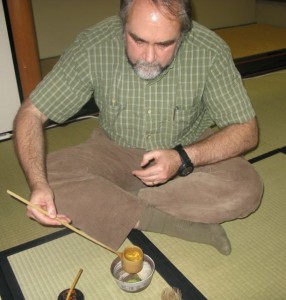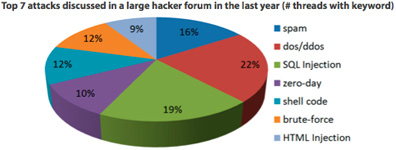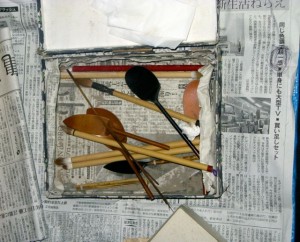What is the state of game studies in Japan? The inaugural conference of the Ritsumeikan Center for Game Studies (RCGS) that I blogged about before, had a session titled “Game Studies in Japan: Past and Future” that was dedicated to introducing game studies in Japan to the Ritsumeikan audience through speakers invited from other universities. While one session with three speakers hardly covers the variety of game studies in Japan, it (and the discussion that followed) were my introduction to how the Japanese talk about the field among themselves.
Month: October 2011
Ritsumeikan Center for Game Studies
Note: This is the first in a series of blog posts about Japanese Game Culture and Game Studies. Thanks go to the support of GRAND, The Ritsumeikan Art Research Center and the Japan Foundation.
Part 1: Setting the Scene
What better way to introduce game studies in Japan than to describe the Game Studies in Progress symposium held to celebrate the inauguration of the Ritsumeikan Center for Game Studies (RCGS). As I was in town thanks to support from the Japan Foundation, I was invited to be one of the guest speakers at a half-day conference on October 14th that kicked off the new center. The creation of the RCGS, which might also be translated “Ritsumeikan Games Research Center,” is one of the outcomes of a major research investment on the part of the Japanese government in a Digital Humanities Center for Japanese Arts and Culture.
The conference was held at the Art Research Centre building of Ritsumeikan University in a special room outfitted with a motion capture system and a sprung-wood floor suitable for Noh performances. One of the research groups of the Digital Humanities Center is the Digital Archives Technologies Group that is experimenting with ways of digitizing cultural heritage traditions like the Japanese Tea Ceremony or Kabuki. These traditions challenge classical Western ideas about what constitutes heritage. There are no archaeological digs, cathedrals or paintings to digitize when trying to preserve Bunraku puppet theatre; instead it is a tradition of oral teaching and performance that they are trying to support through digitization. So there we were in this special room dedicated to a 1000-year old art inaugurating the first explicitly named game studies centre. We were reminded of this as the floor was covered, we all had to leave our shoes at the front (something unusual for university buildings in Japan though common in houses and shrines) and we were reminded not to bring in any food or drinks. It was as if we were in a Zen temple to talk about that most postmodern of subjects, the videogame.
To accommodate the two foreign speakers – myself and Professor Jaakko Suominen of the University of Turku Finland, they had kindly found the extra funding for the translation services described above. For two of us they had a team of at least three translators and staff! Not for the first time I was awed by the hospitality of my hosts. Not for the first time I don’t feel worthy. Not for the first time I feel like a bit of fraud on a paid vacation to learn about Japanese game culture when there must be better cultural interpreters out there. I reassure myself by immersing myself every day so I can reflect some of this back to readers and that’s what these blog posts are about.
A word of warning, Suominen and I listened through earphones to a simultaneous translation of the talks in Japanese which means that I may not have accurately understood everything said. Again, language is one of the problems cross-cultural researchers in game studies have to overcome and it came up at the conference over and over, but more on that later. For this first entry, however, let me introduce the opening speaker, Professor Uemura pictured here.
Opening by Professor Uemura, Director of the RCGS
Professor Uemura is best known as the lead engineer who led the development of the Famicom which was called the Nintendo Entertainment System (NES) in North America. Uemura, who is still a consultant with Nintendo, kicked off the conference by talking about the variety of research taking place already at Ritsumeikan and his dreams for the centre. He listed some of the objectives for the center:
- First, it will bring together people across Ritsumeikan already doing games research. While the RCGS was officially only formed in April of 2011, there is already considerable depth at Ritsumeikan. The Video Game Archive Project has been going since 1998 and there is overlap with other digital arts and culture projects experimenting with virtual worlds for learning and historical GIS. There is also a College of Image Arts and Sciences with undergraduate and graduate programmes that include animation and game design.
- Second, the RCGS will communicate with other researchers in Japan and overseas. (That’s Dr. Suominen and I were invited to talk and why there was a session with researchers from other universities in Japan.)
- Thirdly, the RCGS will collaborate with industry. This will be the hardest objective as Nintendo, the major local game company, is notoriously private and there is little history of industry/academy collaboration. This issue came up politely in the conference.
Professor Uemura then surveyed the types of research already taking place at Ritsumeikan:
- As mentioned above there is research on archiving games, the gaming experience and the history of games. Researchers are, for example, starting work on interviewing early game designers, scanning manuals, and looking at the history of arcades.
- There is significant work around serious games and the use of virtual worlds in education.
- An important area of research for industry is around intellectual property rights and international law.
- Researchers are looking at entrepreneurship and games.
- There is theoretical work on how to define games and methodological work on how to assess them.
- Researchers are looking at the Asian game market. They are looking at the reception of Japanese games in countries like China. How are games infectious?
Professor Uemura himself is studying game play on the Famicom looking for patterns in play. He has a set up which allows him to record input and output from a game while also capturing what is on the screen and video of the player. With this he can then look at rhythms of play and compare play.
 Slide showing the game play capturing system developed by Uemura (from a talk in Japanese)
Slide showing the game play capturing system developed by Uemura (from a talk in Japanese)
Uemura concluded by emphasizing that he wants the RCGS to be a place for play – a place for fun and entertainment with games not just the serious study of games. Games should be fun he said, so games research should be fun. The idea is not research for the sake of research, but a research centre that is like an arcade. In his experience the difference between industry and academy is that in industry people have fun at what they are doing and he hoped that would be true of the RCGS too.
It is worth noting that there was an excitement to the symposium and generally an openness not always found elsewhere. The feel of the symposium was that participants were at the birth of something that they could participate in as game studies is just gaining academic credibility in Japan. As others pointed out game studies in Japan is just in its infancy which for the participants means that there is none of the unwelcome turf wars we see in game studies in the West. In Japan they seem to have missed the ludology vs. narrativity battles.
Next: Part 2: Games Research in Japan
Live Coding at the Edmonton Dorkbot, Oct 11
While I couldn’t attend, the Edmonton Dorkbot had a live coding event organized by Scott Smallwood. See Vadim Bulitko’s photos at Edmonton Dorkbot, Oct 11 (click the links to go to the YouTube videos).
The Kong Off at Richie Knucklez Arcade
Wandering around I came across a short movie about The Kong Off at Richie Knucklez Arcade Featuring Billy Mitchell, Hank Chien, Steve Wiebe and many more to be announced soon. The short documents a Donkey Kong contest called the Kong Off held a the Richie Knucklez Arcade. The Kong Off brought together DK players Mitchell and Wiebe made famous by the 2007 documentary The King of Kong: A Fistful of Quarters. There is also the current DK record holder Hank Chien and a cute Quebec boy who represents the next generation.
The documentary is by Scott Cramer.
Digital Humanities International
Elisabeth drew my attention to this French blog, Digital Humanities International. This blog is supported by Adonis, a large cyberinfrastructure project in France that I blogged about before. The site seems well maintained and they have a good long discussion about the digital humanities in French.
Culture and Computing 2011: Conference Report
I have put up my conference report on the Culture and Computing 2011 conference held here in Kyoto.
The conference brought together three communities of research and practice, media arts, language technologies, and the digital humanities. They also had a full complement of traditional arts demonstrations and an exhibit space with companies and artists side by side. I like this combination as it avoids the purely academic. Language technologies are an important business and media artists engage their public differently than academics do. We can learn from both.
I went mostly to the digital humanities papers. As Seth Denbo pointed out in his paper (the last of the digital humanities stream), very few of the digital humanities papers dealt with text. In the West we privilege text, especially in the humanities where we not only study texts, but we share our research through texts. In Japan text is less important as a form of cultural transmission and therefore digital humanists are working with other forms of culture from calligraphy to Kabuki.
Analysis of 250,000 hacker conversations
From Slashdot a story about the text Analysis of 250,000 hacker conversations. A security company Imperva has been analyzing hacker forums to understand trends, how people learn about hacking, and what are popular strategies.
In the Imperva report, Hacker Intelligence Initiative, Monthly Trends Report #5 (PDF) they describe their methodology as “content analysis” (their quotations) but it mostly involves searching for threads and reading. The report has great examples of the types of discussions.
A good example of how simple text analysis can help industry understanding.
A Day in the Life of Privacy
From Slashdot this readable summary of the compromises we make in A Day in the Life of Privacy. The essay walks through the privacy concerns around daily life from renting a video (and being asked for your Zip code) to you smartphone.
The Arcade Flyer Archive
 A great resource for game studies is The Arcade Flyer Archive. The archive includes high resolution scans of flyers for video games, arcade games and pinball machines. For example here is the flyer for the original arcade game Donkey Kong when Mario was still a carpenter.
A great resource for game studies is The Arcade Flyer Archive. The archive includes high resolution scans of flyers for video games, arcade games and pinball machines. For example here is the flyer for the original arcade game Donkey Kong when Mario was still a carpenter.
EVERYONE’S GOING APE OVER DONKEY KONG!
“HELP! HELP!” cries the beautiful maiden as she is dragged up a labyrinth of structural beams by the ominous Donkey Kong. “SNORT. SNORT.” Foreboding music warns of the eventual doom that awaits the poor girl, lest she somehow be miraculously rescued. “But, wait! Fear not, fair maiden. Little Mario, the carpenter, is in hot pursuit of you this very moment.”
It would be interesting to do text analysis on the text or image analysis on the page images.
Japanese tea ceremony

I was recently invited to Ritsumeikan‘s student tea ceremony circle. I watched the students timing each other as they performed the ritualized movements and was then shown how to prepare matcha, which is made from a powdered green tea that is stirred into the hot water with a bamboo whisk. The tea ceremony is a tradition that is focused outwards towards the other that you serve. As such it complements the Zen practice of meditation that is focused inwards on calming the mind.
Following Donal Keene’s comparison of Pachinko to Zen meditation (Zazen) I am tempted to see in the tea ceremony signs of Japanese game culture. In the tea ceremony you can see a passion or obsession similar to that of otaku fans. The picture above shows the tools (Haioshi) a member of the circle was using to sculpt the ash (Hai) in a brazier (Furo) which would be used to heat the water for tea at an upcoming ceremony. The ash in the brazier would be difficult to see, but it still gets the attention of a Zen garden. Likewise the ritualized movement of the ceremony suggests rythm games popular in Japan, though the idea in the tea ceremony is to move slowly and gracefully. The beautiful small tea rooms are small worlds where everything can be set right. And, unlike meditation, the tea ceremony is shared, collaborative play.
Perhaps it would be more accurate to say that the tea ceremony is a form of play in Huizinga’s sense of an activity set apart from the world with its particular magic space, utensils, and movements.






